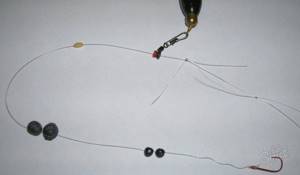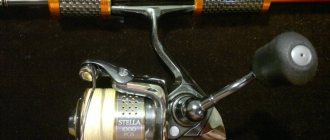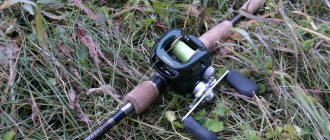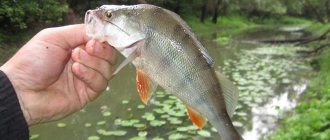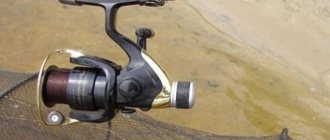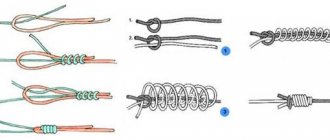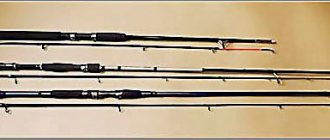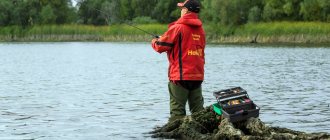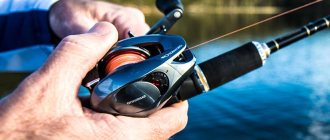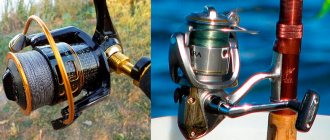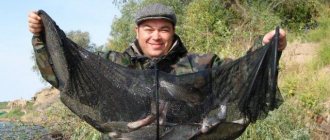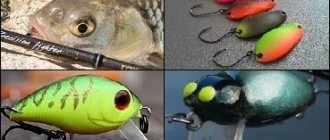In order to start fishing, you need to properly prepare your fishing tackle. For this, in turn, it is important to decide exactly how and what kind of fish you are going to catch. There are actually many options for how a fisherman can choose his equipment.
In addition, each fish has its own characteristics , which must be taken into account when preparing fishing gear.
Flying rods
This variety is designed for short to medium range fishing. Casting a line is done using a swinging motion. This is where the name of this type comes from. Its main difference is that there are no rings for fishing line. This is called "blind rigging".
Fishing in this way can take place both in still and flowing water. Flying rods are considered the most ancient and, at the same time, the simplest and most accessible. When fishing, such fishing rods are usually held high in the hands, which makes using a heavy fishing rod uncomfortable.
Therefore, low weight, which is necessary for repeated casting of the fishing rod, is a vital necessity for this species. They are made from various types of plastic, and sometimes a telescopic design is used.
They, in turn, are divided into several subspecies:
- The shortest ones are up to four meters long. Used for catching small fish close to the shore. This variety is used quite rarely.
- Medium rods can range from five to nine meters in length. Their use is universal. This type is the most common. They are used to catch fish at a distance of five to thirteen meters. Designed for a fish weight of no more than two and a half kilograms.
- The long ones measure 10 - 13 meters. Designed for long-distance fishing enthusiasts. They are used for a distance of 15 - 21 meters. They are distinguished by their high cost and are rarely used in amateur fishing.
- A separate type are carp fly rods. Their length is usually from 7 to 12 meters. Their main difference is greater strength and massiveness. This is due to the fact that coarser fishing equipment is used.
How to choose a fly rod?
- If we consider the material , then in our time three main varieties are used. Fiberglass is the cheapest type. At the same time, the material is rougher and more massive.
- The composite consists of fiberglass and carbon fiber in a certain proportion. Is an intermediate option.
- Carbon fiber . It is considered the highest quality and lightest. However, this is also a more expensive material.
Line and rod action
It connects all parts of the fishing rod together and bears the main load when hooking and landing fish. The fishing line must be equally strong along its entire length, not rot, and with the smallest thickness be able to withstand the greatest load.
Fishing line has several characteristics, but most often only two are indicated on the label of a reel with fishing line - diameter (thickness) and linear breaking load (strength).
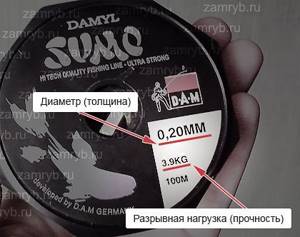
In most cases, they are guided only by these two characteristics, but this is not entirely true (more on this below).
Diameter (thickness)
Labels often indicate a reduced diameter. It is noticed that the difference is two hundredths of a millimeter, it is written 0.12 mm, but in fact 0.14 mm. In principle, when a smaller diameter is indicated there is nothing to worry about. The main thing is that the fishing line matches the required breaking load.
And they underestimate the diameter in order to increase the price. After all, the thinner the line and the greater the linear breaking load, the higher the quality it is considered, which means the price should be higher.
Linear breaking load (strength)
Line strength is measured on a straight line, without knots. The knot, depending on its type and the parameters of the fishing line, reduces the strength by 5 - 50%. But even here on the packaging the breaking load is not indicated correctly, or rather it is written as overestimated. As they say, this is normal, it’s just business.
But, choosing fishing line based only on these two well-known characteristics is not entirely correct. In addition to thickness and strength, the fishing line has other important characteristics: elongation (elasticity), wear resistance, rigidity (fragility), chemical resistance.
Extensibility (elasticity)
If you pull the fishing line by the ends as if to break, it will increase in length, and after loosening it will again return to its original size (without deformation). Elasticity is most important in winter fishing. You have to pull the fish out of the hole by hand using the fishing line. In this case, the elasticity of the fishing line serves as a shock absorber and softens the jerking of the fish.
You may have already seen special fishing line for winter fishing in fishing stores. Its elasticity is or should be increased.
In a float summer fishing rod, the rod serves as a shock absorber. A rod is not just a stick, it has such a characteristic as “rod action”. I didn’t write about this above, I decided to write about the “rod structure” when we talk about fishing line. I'll try to briefly explain what it is. The rod can be thought of as a spring.
The ability of a fishing rod to behave like a spring with different stiffness and elasticity and at the same time not break or deform is called the structure of the rod. Of course, there is a load limit under which the rod will not break, and it is called the rod test. But this is already a topic about spinning rods, which are used to throw baits of various weights. So we skip the rod test and move on.
There are three main tunings: fast, medium and slow. You can come across more names of the system, but here we consider only the main ones.
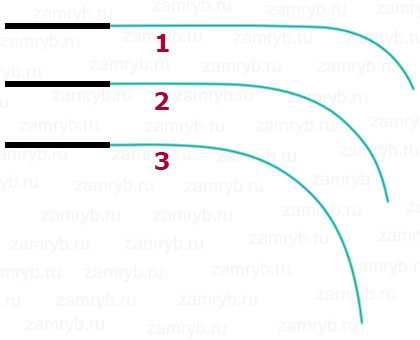
- The rod has a rigid (fast) action, only the upper part of the whip bends.
- The rod is of medium action, bends in the upper half of the whip.
- A rod with a slow (parabolic) action, also called parabolic, bends along the entire length of the whip
There is no need to delve too deeply into the structure of the rod yet; as already written above, I recommend an inexpensive rod for beginners. On cheap models, the characteristics on the label do not correspond to reality, so we choose a rod only based on a visual inspection of the rod, so that it is not crooked, not slanted, not broken... (read the procedure for choosing a rod above).
Let's continue, the elasticity of the fishing line and the structure of the rod soften the jerks of the fish, thereby protecting the fishing line from breaking. But excessive depreciation is also not needed. There will be a late cut. Also, and vice versa, due to poor shock absorption of the fishing line or rod during hooking, we can simply tear the fish’s lip or, even worse, break the rod.
In principle, a beginner does not yet need to worry about the elasticity of the fishing line for a float rod. Still, cheap fishing rods have more or less quite tolerable action.
Wear resistance
When fishing with a rod and reel, the line constantly rubs against the guides. And when fishing for fish, the friction of the fishing line against the rings is even greater. Therefore, this quality indicator is the most important for a fishing rod and reel.
Hardness (brittleness)
The fragility of the fishing line affects the strength at the knots. Rigid lines have a high breaking load, but have the disadvantage of losing strength at the knots. To compensate for this disadvantage, special units are used. Another advantage of rigid fishing lines is that they are less tangled.
Chemical resistance
This parameter characterizes the resistance of the fishing line to aggressive environments, such as petroleum products. This affects the “aging” of the fishing line. In stores you can find Teflon-coated fishing lines. But they are expensive.
It is difficult to check all the characteristics of the fishing line at home. Therefore, when searching for a quality fishing line manufacturer, they are mainly guided by reviews in fishing magazines, or exchange opinions on forums on the Internet.
So what should a beginner choose? Again, I recommend choosing something inexpensive. For most cases, a fishing line with a diameter of 0.15 - 0.18 millimeters is sufficient. Can handle fish weighing up to 1 kg. There is no point in thinking about all the characteristics of a fishing line for a beginner. You need to know the wear resistance or chemical resistance of the fishing line will be clear after several fishing trips.
I also note that it is better to purchase fishing line of two diameters at once, for example 0.12 mm and 0.15 mm, or 0.15 mm and 0.18 mm. This will come in handy when you need to make leashes.
Bologna rod
Some believe that Bolognese fishing rods are the most convenient option for beginner anglers . It is telescopic and at the same time has guide rings for fishing line.
Choosing a Bolognese rod
First of all, you need to navigate the price. These rods can be very cheap, but they can also be quite expensive. It is not recommended to save on such a purchase. Try to find money and buy something expensive, but of very high quality. However, it is also not recommended to focus on a very expensive product.
The most expensive products are usually aimed at those professional fishermen who have their own specific specialization. Therefore, it is not recommended to buy the most expensive ones at the initial stage of mastering fishing.
The most common, fairly convenient length is approximately four to five meters .
The action of the rod, preferably, should be such that when tension is applied, only the tip of the rod bends (rigid action). It is not recommended to purchase one with a soft action (when loaded, the fishing rod bends evenly along its entire length).
Zhivtsovka
When describing float gear, many authors forget to mention the live bait fishing rod. Perhaps they believe it has outlived its usefulness or believe it is a type of lapdog.
However, both of these are not true. Firstly, despite the development of spinning rods, there are many fishermen, especially in rural areas, who catch pike and perch exclusively with live bait.
Secondly, pike bait is not a Bolognese fishing rod at all, although there are similarities. But the fishing rod we are considering can be configured on any type of blank:
- long powerful spinning rod;
- feeder;
- carpogwike;
- telescope.
There are fishermen who mount live bait on a modern fly rod; as an example, you can watch the video below from Evgeniy Sereda.
Live bait fish consists of:
- A rod 3-5 meters long.
- A spinning reel with a size of 3-4 thousand units.
- Monofilament fishing line with a diameter of 0.25-0.35 millimeters.
- Sliding float with stop beads.
- Sliding sinker.
- Metal leash.
- Tee.
Note! The float should be such as to hold the bait while being above the surface of the water. The sliding sinker does not allow the predator to immediately sense the catch from too heavy prey - the fry.
Match rod
This type is different in that it is very carefully designed for long-distance casting. Made of special plastic and attached to it are rings, which are made in large quantities and are relatively small in size.
One of the problems that guide rings help solve is the uniform distribution of the weight of this fishing rod .
Choosing a match rod
Since a match rod is usually made to a good level of quality, the choice here is less about choosing the level of quality and more about choosing the type that best suits your type of fishing.
Match rods are usually produced for the following fishing options:
- Those that are made for classic fishing both in still water and in the current.
- Those designed for carp fishing.
- Rods that are designed for fishing at a distance of forty meters or more from the shore.
Each variety has its own length, its own tuning, and also its own test.
What does a reel fishing rod consist of?
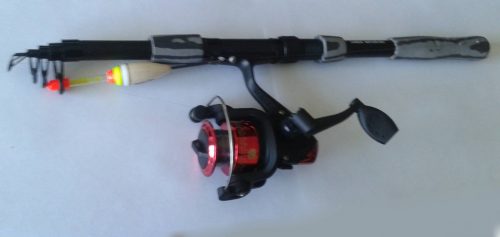
A properly assembled fishing rod is the key to a good catch.
The classic version of the fishing rod consists of the following components:
- fishing rods;
- coils;
- cargo;
- fishing lines;
- hook;
- float
Some fishermen save on purchasing a reel by replacing it with a reel. However, on the modern market there are so many similar products at different prices that anyone can find gear they can afford. All necessary equipment must be purchased before properly assembling the fishing rod.
The following types of rods are used to assemble reel fishing rods:
- A fly-type rod used in small bodies of water.
- Bolognese type rod, most comfortable for beginners.
- A match-type rod designed for long-distance casting.
- Plug type rod.
Coils can be inertial or non-inertial. The first type is a budget version and is more suitable for fishing over cliffs rather than for casting into the distance.
The most important thing when using an inertial reel is not to forget to snap the latch, because otherwise the line will inevitably get tangled.
The second type of reel is excellent for long-distance casting. They are suitable for various types of fishing rods and spinning rods and have many additional features that make fishing easier.
Plug rods
Their distinctive features are as follows:
- They consist of thin and durable tubes that are connected to each other.
- The fishing rod is light, but at the same time durable. It does not bend under the weight of the fish.
- There are practically no passage rings in our usual form and, as a rule, it is not used for casting.
- Usually rods of this type are very long. Their length ranges from 9 to 20 meters.
- Such fishing rods can be shortened by removing the corresponding link from it and connecting the remaining ones.
Fishing with such rods can give the fisherman certain advantages:
- The fishing rods actually do not bend , this allows them to be positioned exactly where needed.
- The rod allows you to fish in places where a fly rod is unlikely to be able to do anything . For example, this could be where willow branches lean over the water. With a pole rod you can fish while sitting directly underneath them. A similar situation arises when fishing under bent trees.
- Since with this method of fishing it is possible to achieve high casting accuracy , this will allow you to localize the place of bait.
How to choose a plug rod?
For beginners, it is recommended to use relatively small ones, which have a length of four to six meters .
They are good for catching large fish. If you are a more experienced fisherman, you can also take advantage of other varieties.
Choosing a fly rod for float fishing
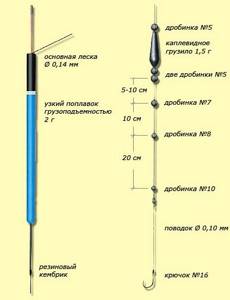
For a beginner, the best option for a fly rod would be a medium-fast action rod. This is due to their versatility when catching any medium-sized fish. A high-quality fishing rod should have a rigid action. Its length is usually from four to six meters.
A long rod is correspondingly heavier than a short one. And in a fly rod, lightness is of great importance. Therefore, to begin with, you should opt for fishing rods less than five meters; they will be quite enough for the first fishing.
It is better to choose rods with reels. If there is no reel, the rod will be lighter in weight, but weaker in terms of fishing performance. Using a simple reel is the choice of every fisherman.
Attaching the fishing line to the float rod
In this case, there are two main options that are usually used:
- Your rod has rings through which the line is passed.
- You don't have guides, but there is a special mount for fishing line at the tip of the rod.
In the first case, this attachment is done as follows. To do this, you must first attach the reel to the fishing rod. Then we thread the fishing line through all the guide rings of the rod, including through the last ring located at the end of the rod.
If there are such rings, then when the rod is sold, a special mount is provided for attaching the fishing line; it must be glued with superglue and the tip of the fishing line must be tied to it.
How to wind fishing line on a reel
For good fishing and a trophy catch, all elements of the spinning rod must be of high quality and correctly balanced and, of course, you need to know how to wind the fishing line onto the reel correctly. You should carefully choose the rod itself, as well as all the equipment on it, otherwise it can let you down more than once and cause a lot of trouble. And of course, special attention should be paid to how to properly wind the fishing line onto the reel so that no knots are formed and, for example, the inertial reel functions properly without jambs. Winding the fishing line onto the reel affects many characteristics of the fishing rod, including the casting distance of the gear, as well as the chance of beards appearing. But many beginners do not pay attention to this and make unforgivable mistakes. What to do and what not to do and how to wind braid on a reel?
Any good fishing trip starts with quality preparation, including how to properly spool braid onto a reel.
Some of the main points you should keep an eye on are:
- How much fishing line will fit on a spinning reel before winding the reel? Many beginners ask the question “how much fishing line should I put on a reel?” and the answer to it is prosaic - enough. The entire reel should be covered with it so that you have enough length for long casts, but “slides” should be avoided, because they can lead to not the most pleasant consequences.
- With what force is the equipment wound onto the reel, especially when the fishing line is wound onto spools, where the tension force is very important. If you overdo it when winding the line onto the reel, then you will not be able to make good long casts; the tackle simply will not be able to overcome the resistance. The easiest way to control this is the old-fashioned way - wind the line with two fingers, without any aids.
- Determine whether you are winding the line on the spinning reel in the right direction. The spools rotate both counterclockwise and clockwise, but their direction should always coincide with the direction of winding. If you notice a mistake, barely having time to tie a knot, then a couple of rotations of the rig will help rewind everything to its original position.
Also important is how you tie the knot around the reel; this aspect should never be neglected, otherwise the tackle may simply go to the bottom along with the fishing line when fishing for large fish. You should also dwell in more detail on how the fishing line is wound from the reel, because here too there are some nuances. It is better if you wind the fishing line onto the reel; in this case, there will be several people, one of whom will hold the reel, and the second will hold the rod and reel. One of the nuances of how to properly wind fishing line from a reel is to use an oblong object, be it an ordinary stick or even a pen.
Such a device is inserted into the reel itself, after which a second person begins to twist the tackle onto the rod until the desired length is reached. You should be careful when winding the line onto the spool.
If you need to properly thread the fishing line, but you don’t have a partner, then you can use the same stick stuck in the ground, or any other object where you can insert the reel. If you decide to thread the fishing line into the reel before fishing, then an ordinary door handle or even a handle from a carpenter's vice will do. The main thing is to watch how the spinning rod is wound onto the reel so that no knots or “partings” are formed, which can lead to tangling of the gear. You should also choose the type of reel for the fish you want to catch, because for some, inertial ones are better suited, and some species are easier to fish with inertial ones.
Correct winding occurs when one end of the tackle is secured to the spool itself. To do this, it is enough to slightly lift the line guide and guide the equipment to the spool itself, and here it is important to know how to tie the line to the reel correctly. Make a small loop and place it on the spool, then tighten it and check the strength of the structure and whether the line has been threaded correctly. When using a regular fishing rod, it is enough to tie a simple sea knot on the reel itself. And you should already put the tackle on the spinning reel using the method described above. Also be careful when using an inertial reel, because you need to wind the line carefully, giving it a slight tension. This scheme will allow you to easily make even the longest casts.
Another important nuance in how to wind the cord is the speed of rotation of the gear.
But how does the process of winding braid onto a reel actually take place, how to secure the fishing line, and how many meters of fishing line should you take with you when fishing in case of emergency? And how to install the gear correctly?
To do everything correctly, you must first fix the fishing line on the spinning reel; just thread it into the spool, as described above. You can attach it to this part of the tackle in various ways, directing the knot in any direction, it all depends on the preferences of each individual fisherman. Beginners sometimes rewind everything several times due to an error at this stage, but even for a braided line a regular “noose” will do. We put this knot on the spool, after which you can start putting on the reel, as long as there is enough space on the reel. This stage is called breaking - the moment when you begin to wind the tackle onto the reel and many beginners do not calculate the amount of fishing line.
Because of this, large voids remain near one of the edges, which they try to correct by uneven winding and begin tying electrical tape to distribute the equipment. However, in the heat, the polymer base may simply melt, which will completely destroy all your hopes for a successful catch. You can replace incorrect electrical tape with regular fishing clips or with the help of small knots on the rig itself, which will limit its movement in the reel, which, in turn, minimizes slipping. In this matter, you should be patient, because even an experienced fisherman says the following: “Sometimes I put the line on new reels 2-3 times until it seems to me that I have done it perfectly...”.
If you don’t want unnecessary troubles when trying to charge a new braided cable, then stick to the following principles:
- First, secure the reel to the rod, and when tying a knot for the fishing line, check the strength of the fixation. After all, some people first tie knots, reel in the tackle, and only then attach all the equipment together to the rod, which is a gross mistake. When we pull braid without a rod, it can develop beards and tangles, and also become coiled during subsequent casts.
- To make winding easy and convenient, you will need a partner. Otherwise, you are unlikely to be able to apply the required tension, and no matter how you stretch the tackle in this case, you will not be able to avoid dismounts. Therefore, having your friend hold the reel and you hold the fishing rod is best suited for this situation.
- When all the gear is installed, make sure once again that you were able to lay the line evenly on the reel, and the distance from both edges to the filled part should not exceed a couple of millimeters.
The biggest mistakes beginners can make is when we “thread” the fishing line to the spool and subsequently tie a knot. Therefore, thread it several times and experiment not only with the noose, but also with other variations of fastening, this will allow you to find the most convenient one for you personally.
Just as fishing methods differ depending on the type of reel, so the method of winding can vary depending on conventional or inertial gear.
So, it should be noted that:
- Spinning reels do not have a spool, so insert the line onto the rim itself and simply secure it with a regular sea knot.
- Putting a fishing line on a fishing rod with an inertial reel is quite simple and there are no nuances here, because this type of gear is considered the most common.
- With multiplier reels, everything is even better, because you just need to tie one knot, and the laying will go like clockwork. The line is passed through such a rod quite simply, and there are no large gaps left.
Experiment and find the most convenient combinations specifically for your needs.
Many experienced fishermen use a variety of tricks to increase their catch. It is much more difficult for beginners to achieve high results, so they have to work hard. The float rod has been around since ancient times and is effectively used for catching many types of fish. Such fishing rods show good results when live bait is used as bait.
Equipping a float rod with a float
As you know, the most common, classic version of the float consists of three main parts:
- Float body . This is its main part, which provides buoyancy.
- The antenna sticks out of the water, usually painted in bright colors. During the fishing process it is located on top. Its movements signal to the fisherman whether the fish has bitten.
- Float keel. It is a thin metal rod. When fishing, it is located at the bottom of the float body.
Making a float
Every self-respecting fisherman can make a float. Currently, there are a lot of available materials. We would like to give brief instructions on how to make one of the classic options - from a goose feather:
- We clean the feather from the beard, or the so-called fan.
- Shorten to the desired length.
- Sand with fine sandpaper.
- We attach a small loop in the lower narrow part of the feather. Can be glued with instant glue or heat shrink tube.
- We paint the float: the surface part in red or orange, the underwater part with colorless varnish.
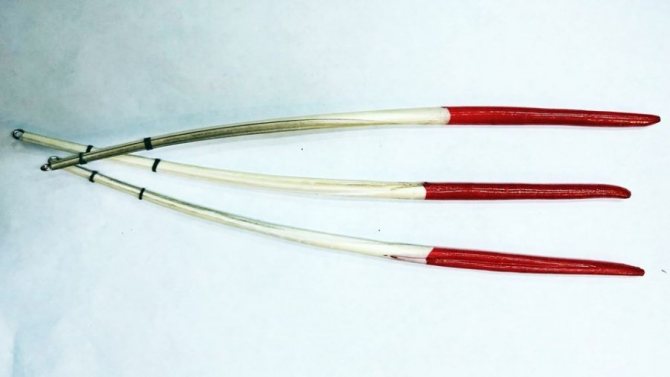
On the finished floats you can put pieces of a nipple for passing the fishing line.
How to attach a float with a ring at the top to a fishing line?
- If there is a special ring on the body of the float , then to attach it to the fishing line we pass it through this ring.
- Next we put on three cambrics . Each of them is a narrow plastic ring, which is designed to attach fishing line to the keel of the float.
- Three cambrics must be installed . Each of them covers the fishing line along with the keel. One of them should be located close to the body of the float, the other - in the middle of the keel of the float. The third should partially protrude slightly beyond the edge of the keel.
- With some mounting options, only one cambric is used , the one next to the float body.
Assembling a reelless oud
If you are using a fishing rod without a reel, then the fishing line must be attached directly to the tip. If a ring is installed, it is tied to it or fastened with a special clasp. If a connector is used for fastening, it is glued to the tip, after which the fishing line is attached to it. It must be taken into account that it should be 15-20 cm longer than the rod.

Then the main line needs to be equipped with a float. It is secured using special stops (cambrics), which usually come with instructions for attaching them. Next, you should attach a weight (slightly below the float). Its mass is selected so that the aisle sinks into the water to the mark indicated on its antenna. To make it easier to navigate, choose floats in the store that indicate the required weight of the weight. Finally, you need to attach the hook. It is tied to the very end of the fishing line with a fishing knot. All that remains is to put the bait on the hook - and you can start fishing.
Proper float loading
When fishing, the float must be immersed in the water and stand vertically. This can be achieved by adjusting the weight on the fishing line. Correctly performed adjustment will contribute to the maximum performance of your fishing .
How to load a float on a pond?
To do this, you need to install a float on the fishing rod and attach lead pellets below it. This is easiest to do with pliers, pressing the pellets onto the fishing line . If the load is too large, the pellets can easily be pinched off. When the optimal weight is determined, the procedure will be completed.
How to load a float at home?
In this case, everything is done in the same way. To do this, you need either a filled bathtub or a tall bottle . In this case, it is convenient to attach the pellets as close to the float as possible.
Float mount
We chose a fishing rod and secured the line. The next step is to attach the float to the fishing line. There are options here too.
- blind mounting of the float. This is a fastening in which the float cannot be moved along the fishing line. It is used if the depth of the intended fishing will not exceed 2 meters. With this method of fastening, the float is simply tied to the fishing line in the right place,
- sliding mount. With this method of attachment, you can adjust the float on the fishing line while fishing. The float is attached to the fishing line using cambrics made of rubber or PVC.

Leash attachment
If there is a snag or the fish breaks the line, you will lose the leash, but the line will remain intact. The use of a fluorocarbon leader is now popular. It is practically invisible in water and has sufficient strength. It is recommended to stock up on several leashes and change them if the need arises.
You can attach the leash to the fishing line using any suitable knot. One of the most popular is the figure eight knot.
This is what he looks like.
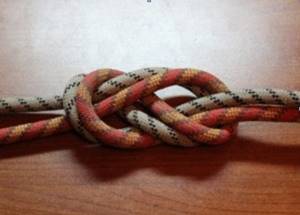
Hook attachment
The last thing left to do after all of the above is to tie the hook to the fishing line. Despite its simplicity, this often poses great difficulties for inexperienced fishermen. There are a huge number of nodes with which this can be done, the choice is yours. But the main thing is that the chosen method is convenient for you. The only thing I can recommend here is to practice more often.

A properly assembled fishing rod is half the success in fishing. And it’s better to spend an extra hour at home than to lose your rest time later.
sovetclub.ru
How to properly tie a hook to a fishing line?
One popular knot is the palomar knot.
It is knitted as follows:
- The end of the fishing line is folded in half and threaded through the loop of the hook.
- Then it needs to be looped around the main fishing line. This way we get a simple knot here.
- Then the loop is thrown onto the fore-end and moved onto the fishing line.
- The knot is tightened, and the excess piece of fishing line will need to be cut off.
It looks like this
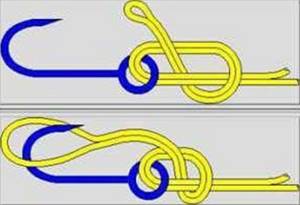
How to properly assemble a fishing rod for crucian carp?
You need to choose a rod that can cast over a distance of ten to fifteen meters. To do this, they usually use a fishing rod with a fly rod. In some cases, it will be convenient to use a match one, since it is well suited for long casts.
It is important that the length of the equipment is no less than the length of the fishing rod itself . When fishing for crucian carp, there are often cases when powerful jerks occur. In this case, it will be convenient if the tip of the rod is equipped with an additional shock absorber that will dampen jerks. The float must be carefully adjusted.
When fishing for crucian carp, it is important that the float is properly loaded.
Here we covered the question of how to equip a fishing rod.
Loading a fishing rod
Loading means attaching a sinker to a fishing line. There is no specific correct option here. It all depends on the place, fishing method, and even on the type of fish. The only rule that must be followed when loading is that the weight must be of such a weight that the float does not sink but also does not float on its side on the surface of the water.
